

 Finally after a year long wait I could demo the game on equal terms, both me and Andreas now had the rules in English so things went a lot smoother than during my many games against Thomas, Patrik and David in the past.
Finally after a year long wait I could demo the game on equal terms, both me and Andreas now had the rules in English so things went a lot smoother than during my many games against Thomas, Patrik and David in the past.We decided to play a "Skirmish" level battle, for two reasons. One being that the Skirmish level is recommended as an entry point into the game, it covers all the rules but plays on a smaller scale which makes it easier to comprehend and faster to play. This is the tournament standard for By Fire & Sword down in Poland and it has seen great success and popularity with tournaments organized by Wargamer.pk being played frequently.
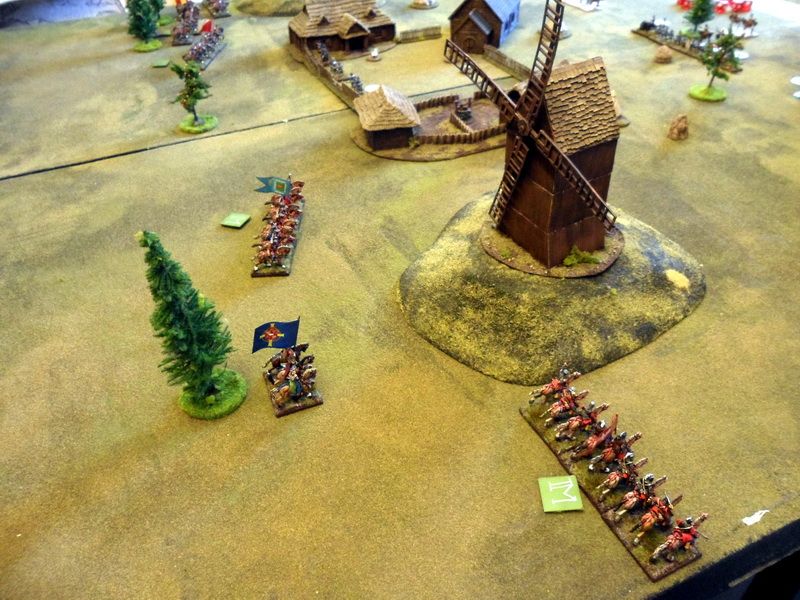
The other reason to play a "Skirmish" level battle is to enjoy the richer scenario section, which is very well fleshed out for the Skirmish level of the game. Division games are large pitched battles where you determine winners by friendly and enemy casualties (or if you can come up with thematic background stories for your large battles yourself). Skirmish battles on the other hand are about the
 reconnaissance force sent to scout ahead of an army and their little adventure, be it foraging supplies, scouting enemy movements, attacking a village held by the enemy etc. These battles offer two sets of victory points which are combined into a final result, making it a very dynamic experience.
reconnaissance force sent to scout ahead of an army and their little adventure, be it foraging supplies, scouting enemy movements, attacking a village held by the enemy etc. These battles offer two sets of victory points which are combined into a final result, making it a very dynamic experience.A short summary of the concepts of By Fire & Sword which is stressed by the authors:

Armies are never or very seldom equal in strength, historically one side was weaker/smaller and the other larger/stronger. This should however not make the game unbalanced, balance in By Fire & Sword is maintained by a wonderfully crafty system of costs that add up and boost the weaker army. For instance, the weaker player gets to roll for scenarios, scenarios themselves are worth X-amount of army points which boost the strength of the weaker player. This is so because many scenarios have the weaker player occupy favorable positions are make his smaller army able to pick the battlefield.
If both armies are not worth equal amount of points after a scenario has been picked, the weaker player gets another handicap and that is to roll for "additional effects". Each effect is work 1 army point, and these range from getting unexpected reinforcements, your officer having a good day with increase command abilities (or the enemy having a bad day with decreased command ability), you may force the stronger enemy force to break off a small part and put them in reserves and so on.
All these scenarios and additional effects are worth army points which are added to the army strength of the weaker player. Before the game starts one player, who is on paper weaker - will in fact be equal to his opponent due to a lot of tactical advantages.
It's an interesting concept that makes scenarios and games more dynamic.

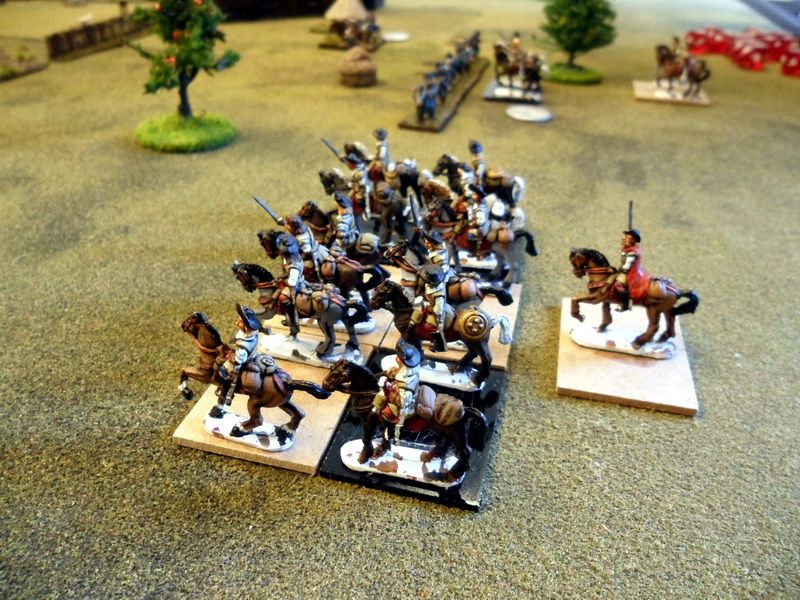 ...........
...........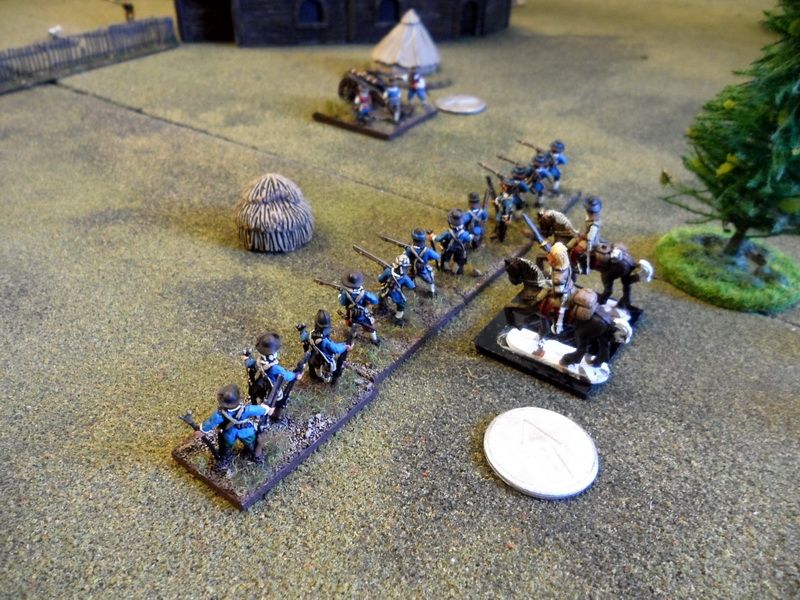
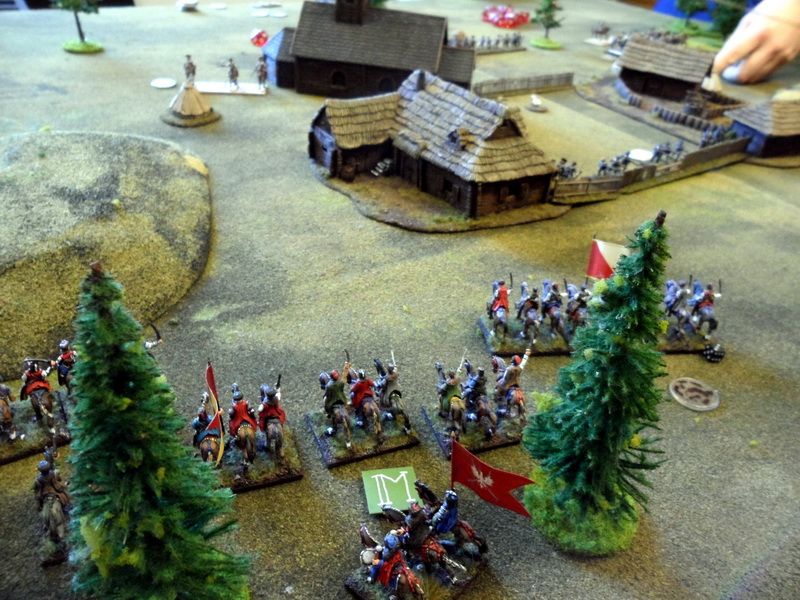 Skirmish Battle: Polish Skirmish force vs Swedish detachment
Skirmish Battle: Polish Skirmish force vs Swedish detachment Right, so I played the Poles and Andreas played the Swedes.
Right, so I played the Poles and Andreas played the Swedes.My Skirmish force was worth 12 points, while Andreas fielded 11 points worth of Swedes. This meant that Andreas was the weaker player and got to be the "defender" and roll 3x D10 dice on the scenario chart and pick one result. The result could not be worth more army points than the difference between our armies. Andreas rolled "Patrols" (0), "Attack on the Village" (0*) and Ambush (3).
As the difference between our armies was only 1 point he had to pick between the Patrols and Attack on the village. In the rare case you can't choose any scenario then the Patrols scenario is your standard engagement. Andreas picked "Attack on the village" this scenario can increase in army points if the defender chooses to deploy troops inside the village. The cost of the scenario increases by 1 army point for every 3 bases of infantry placed in the village. Andreas placed a
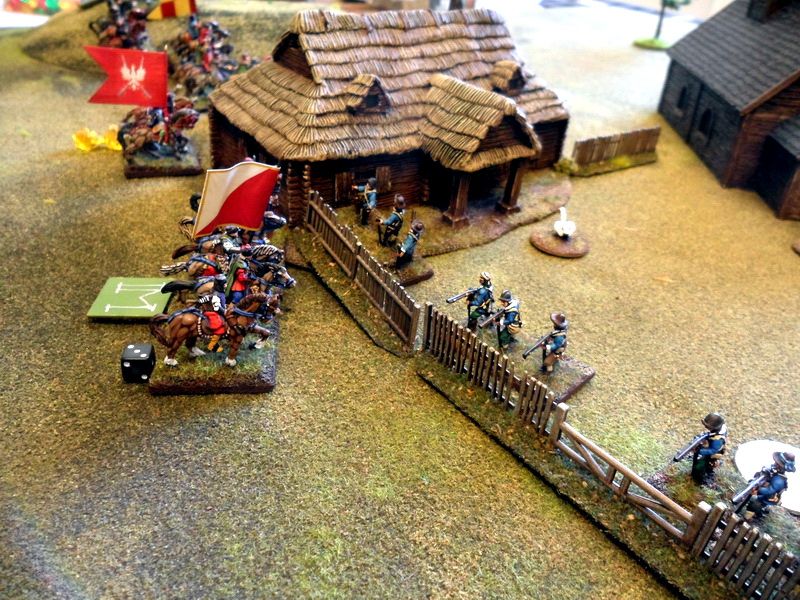 company in the village which made the scenario turn into "Attack on the village (1)".
company in the village which made the scenario turn into "Attack on the village (1)".Our armies were now equally strong. This meant that we both rolled for one additional effect per skirmish force on the additional effect chart.
Andreas rolled "Delayed" and forced one of my Dragoon companies to be placed in Reserve and only able to arrive once they pass a skill
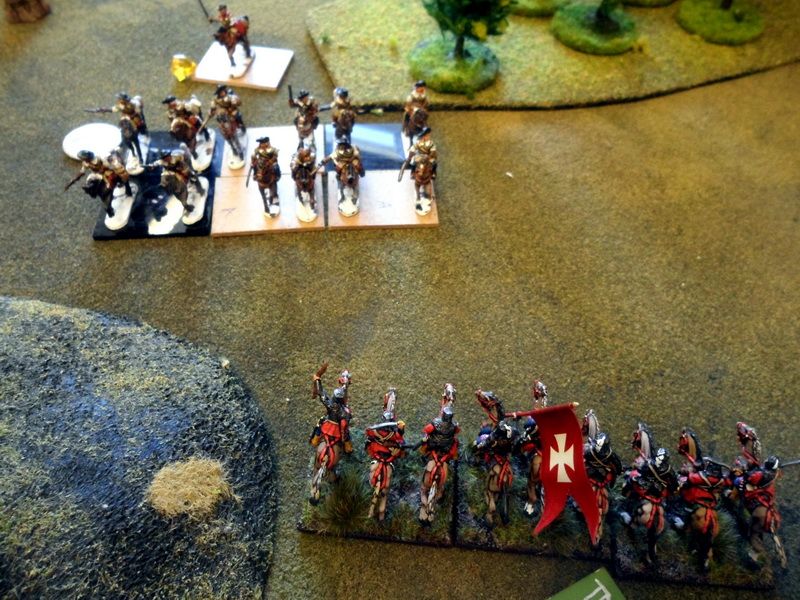 test at the end of a turn.
test at the end of a turn.I rolled "Good day/Bad day", this effect can be played on a friendly officer in which case his command is increased by +1, or played on an enemy officer who will have his command decreased by -1 command point. I choose to boost my own command, mainly due to having the unruly and insubordinate company of Volunteers who required twice the amount of command points to be ordered around.
One more thing that is checked prior to the beginning of the battle is the Reconnaissance effect. At the Skirmish level you count two
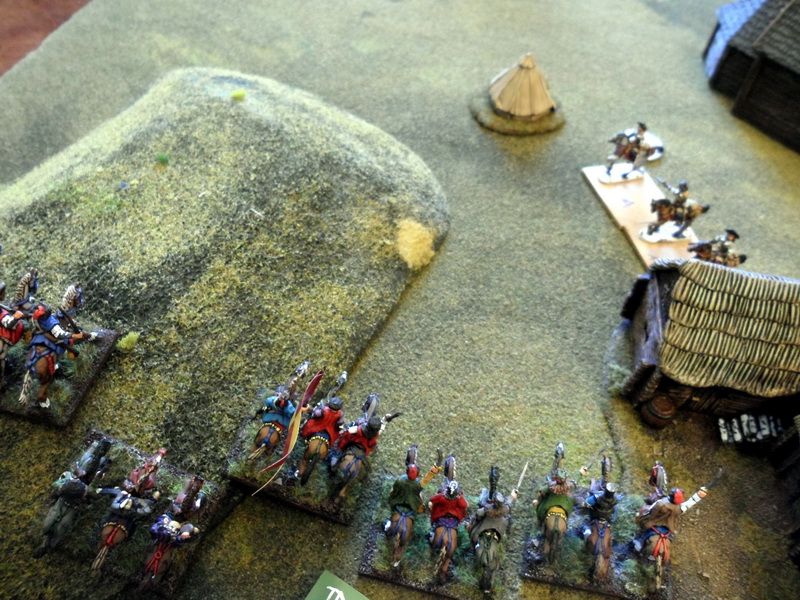 things, cavalry bases and then add the number of cavalry units. Light cavalry, Dragoons and Skirmishers are worth more Reconnaissance points. The final tally of your army is compared with the final tally of the opponent. The player with the highest wins the Reconnaissance and can - if the Reconnaissance is favorable enough in points, receive some nice advantages.
things, cavalry bases and then add the number of cavalry units. Light cavalry, Dragoons and Skirmishers are worth more Reconnaissance points. The final tally of your army is compared with the final tally of the opponent. The player with the highest wins the Reconnaissance and can - if the Reconnaissance is favorable enough in points, receive some nice advantages. In our case, my reconnaissance was so massive that I could put one company in Ambush anywhere on the table as long as it was a terrain feature such as woods or built up area.
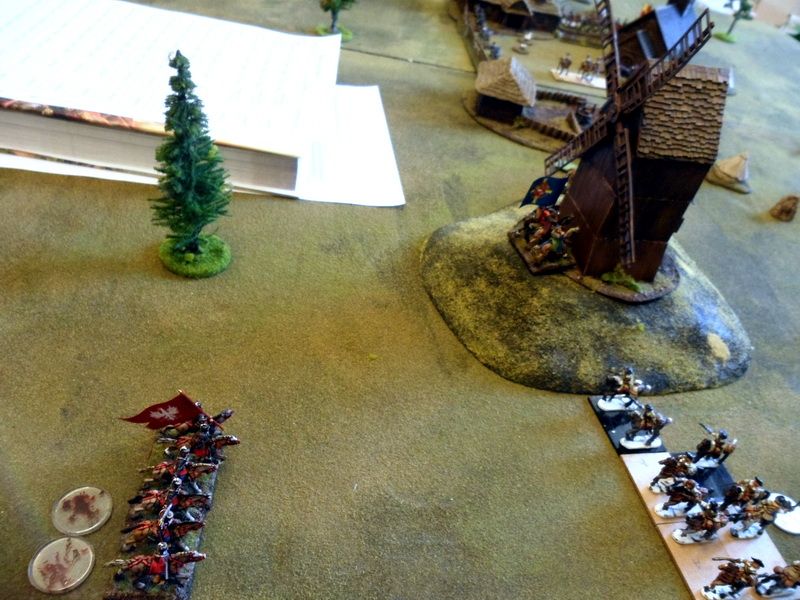 Now the battle begins!
Now the battle begins!............
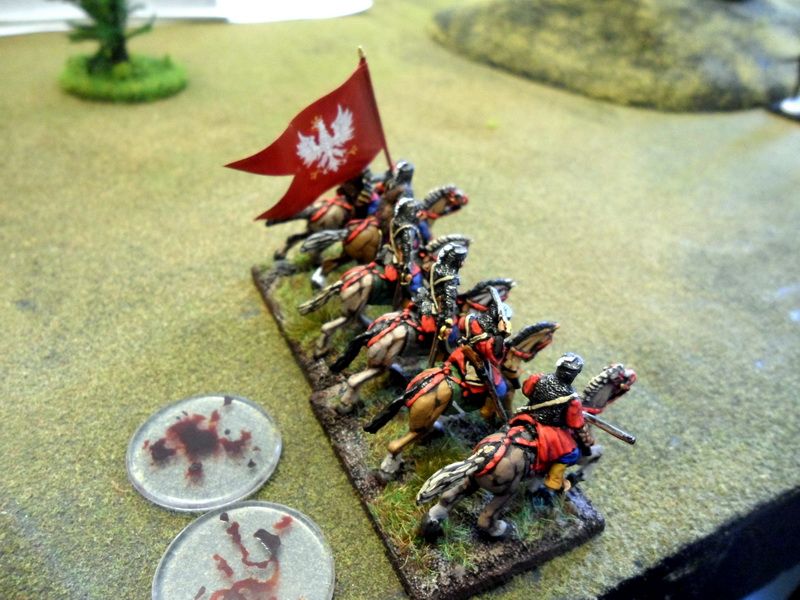 The Attack on the village lasts 6 turns. Both sides, looking for food or just the enemy main army forces spot a village. As it turns out the enemy has already made claims to it and its your job to retake it/drive the enemy away. In our case the Swedish detachment had deployed some sentries inside the village while the rest of the Swedish force was moving in to secure it completely.
The Attack on the village lasts 6 turns. Both sides, looking for food or just the enemy main army forces spot a village. As it turns out the enemy has already made claims to it and its your job to retake it/drive the enemy away. In our case the Swedish detachment had deployed some sentries inside the village while the rest of the Swedish force was moving in to secure it completely.It is up to the Polish force to drive the Swedes away. The player who completely holds the center of the village gets 6 Victory Points. If both sides contest the village each player receives 2 Victory points.
 The Polish side moves onward, Pancerni banners split up on the right flank, cossack style cavalry at the left and center, Volunteers at the left flank. The two Polish commanders control one flank each. The Swedes move out with their Reiters towards the flanks to stop the Polish from outflanking the village.
The Polish side moves onward, Pancerni banners split up on the right flank, cossack style cavalry at the left and center, Volunteers at the left flank. The two Polish commanders control one flank each. The Swedes move out with their Reiters towards the flanks to stop the Polish from outflanking the village. A large Reiter squadron moves towards the windmill and the approaching Pancerni banners while Swedish infantry scramble towards the village, eager to fortify the position and help out the tiny garrison.
A large Reiter squadron moves towards the windmill and the approaching Pancerni banners while Swedish infantry scramble towards the village, eager to fortify the position and help out the tiny garrison.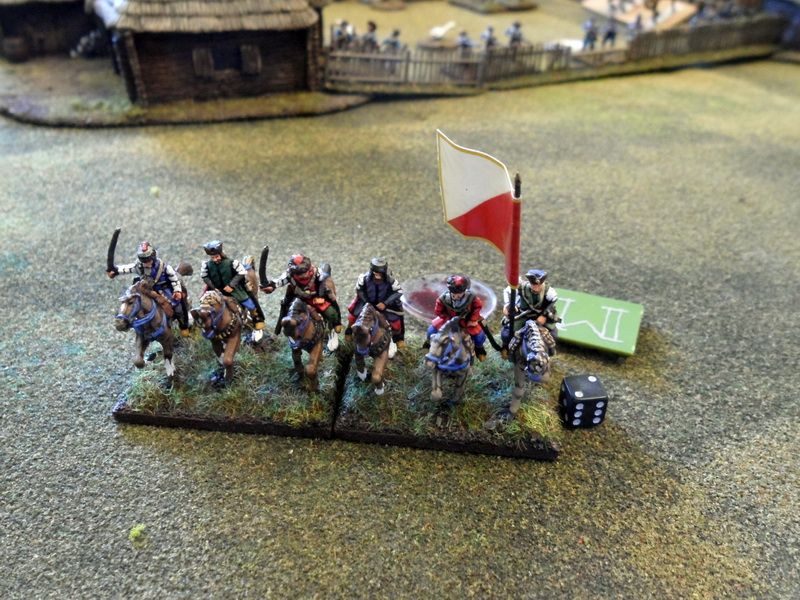 First shots are exchanged between a reckless Polish cossack style banner and the Swedish musketeers inside the village. Riding boldly the Polish light cavalry opens fire with a mix of bows and arquebus guns, the Swedish infantry behind the fence is using the cover well and avoid taking any casualties, while themselves being able to deliver a punishing broadside of musket fire - annihilating one base of enemy cavalry. The Poles pass their morale and stay in place.
First shots are exchanged between a reckless Polish cossack style banner and the Swedish musketeers inside the village. Riding boldly the Polish light cavalry opens fire with a mix of bows and arquebus guns, the Swedish infantry behind the fence is using the cover well and avoid taking any casualties, while themselves being able to deliver a punishing broadside of musket fire - annihilating one base of enemy cavalry. The Poles pass their morale and stay in place. 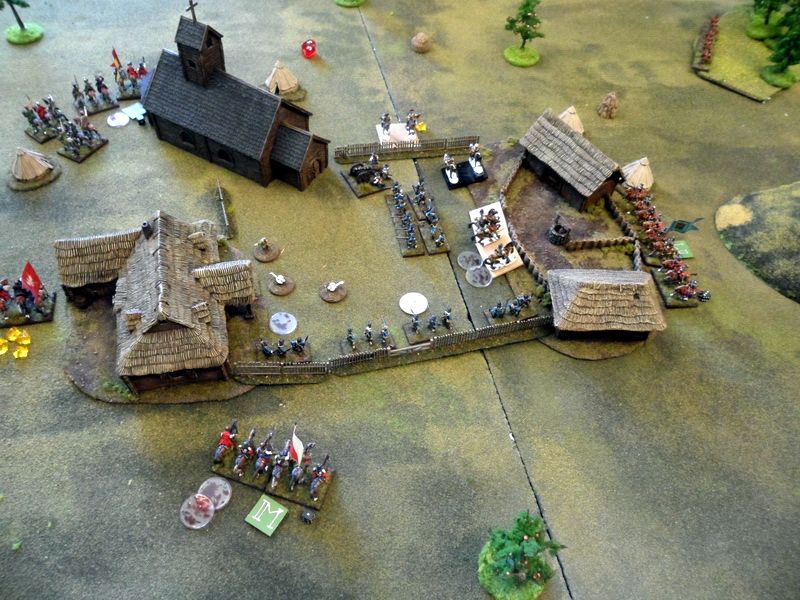 In the meantime the cavalry of both armies are moving along the flanks. A banner of Polish Pancerni and the Reiter squadron face off and shots are exchanged with little effect, at the start of the following turn both both units crash into each other, warhammers and swords exchanging blows, pistols fired at close range. The charge, and countercharge of the two units is performed at such a short stretch that neither side builds up any impetuous to aid them in the fight. The charging Reiters even manage to kill a number of Pancerni with their pistols on the charge. Dead drop on both sides but the Pancerni are badly outnumbered, the Swedes have better tactical discipline and had ultimately inflicted more casualties. The fight is lost and the Poles break.
In the meantime the cavalry of both armies are moving along the flanks. A banner of Polish Pancerni and the Reiter squadron face off and shots are exchanged with little effect, at the start of the following turn both both units crash into each other, warhammers and swords exchanging blows, pistols fired at close range. The charge, and countercharge of the two units is performed at such a short stretch that neither side builds up any impetuous to aid them in the fight. The charging Reiters even manage to kill a number of Pancerni with their pistols on the charge. Dead drop on both sides but the Pancerni are badly outnumbered, the Swedes have better tactical discipline and had ultimately inflicted more casualties. The fight is lost and the Poles break.Trying to flee the Poles are pursued by the Swedish Reiters which manage to catch up with the Poles and fight a second round of combat further crippling the Polish Pancerni banner. The Polish unit breaks again while the tired Swedes remain in place. Only thanks to the nearby Polish second in command does the remnant of the Pancerni banner rally.

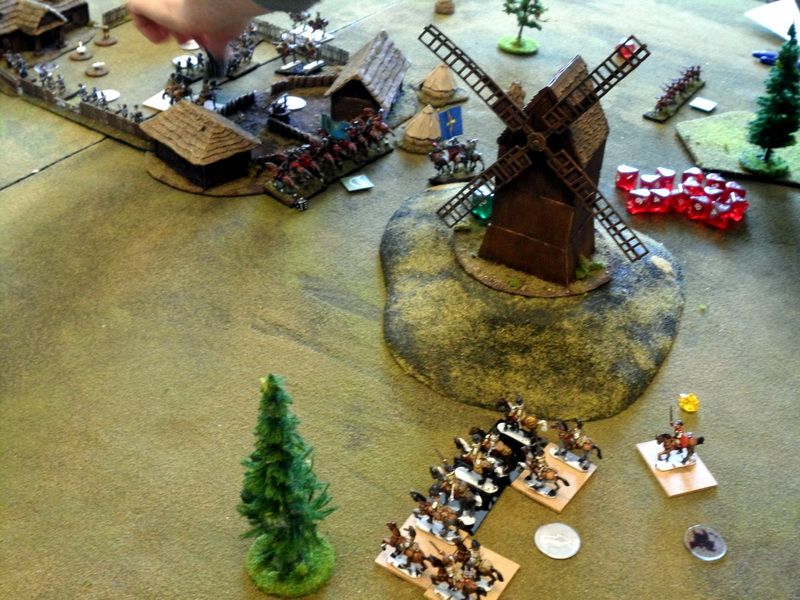 The opposite situation unfolds on the opposite flank with outnumbered Swedish Reiters being charge by both Volunteers and cossack style light cavalry. The light cavalry fails to hit home and are left disorganized, the Volunteers make it into close combat force the Reiters to withdraw in defeat. Not wanting to pursue the Swedes into a crossfire at the center of the village the Volunteers test - and pass - a skill test to hold their horses and keep a cool head.
The opposite situation unfolds on the opposite flank with outnumbered Swedish Reiters being charge by both Volunteers and cossack style light cavalry. The light cavalry fails to hit home and are left disorganized, the Volunteers make it into close combat force the Reiters to withdraw in defeat. Not wanting to pursue the Swedes into a crossfire at the center of the village the Volunteers test - and pass - a skill test to hold their horses and keep a cool head.The situation for the Polish force doesn't look too bright. The delayed Dragoons have yet to arrive and their participation is sorely missed. The Dragoons kept in ambush are prevented to appear due to the close proximity of enemy troops. What could have been an equalizer or even turning point of the battle for the Poles is left locked down for the moment.
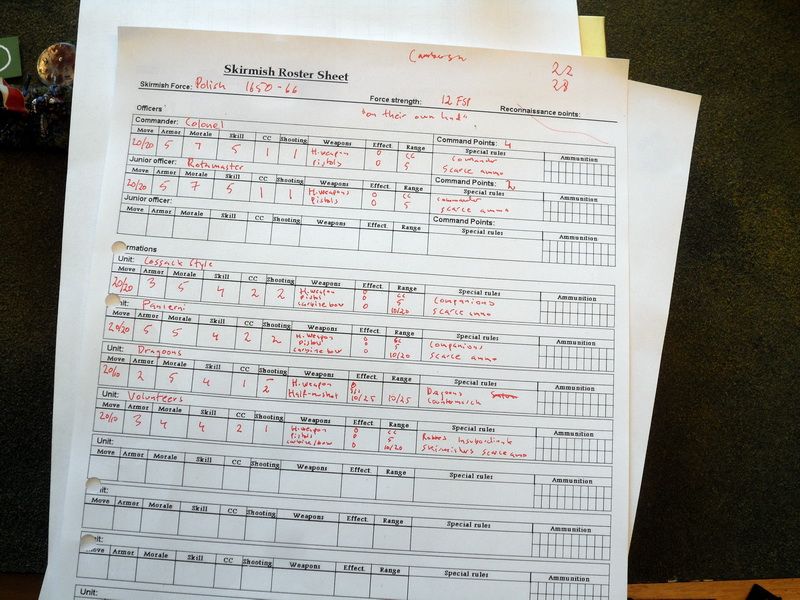 Swedish infantry and artillery units make it to the village, bolstering the strength of the built up area (village center). And with the fleeing and now rallied Reiter remnants the village center is firmly in Swedish hands.
Swedish infantry and artillery units make it to the village, bolstering the strength of the built up area (village center). And with the fleeing and now rallied Reiter remnants the village center is firmly in Swedish hands.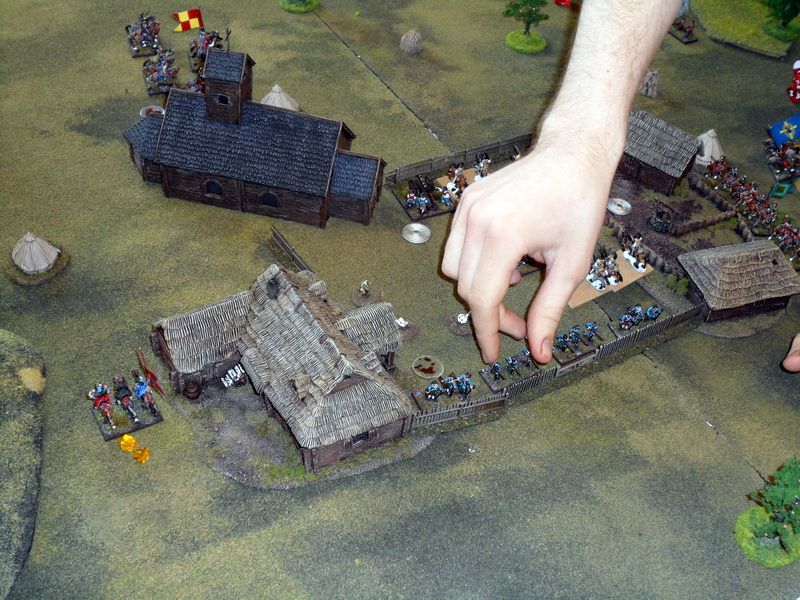 The worst thing about the whole situation for the Poles however is that the still unspent cossack style banner that failed its charge has failed to rally and is left standing without orders! Volunteers ride around the villge hoping to outflank the Swedish defenders, the remaining Pancerni base from the battered regiment is destroyed in a brutal charge by the large Reiter squadron. The remaining still unspent Pancerni banner which was initially going to help out their brothers has to change their intentions and turn towards the village instead where they take up positions behind the fence and open fire at the Swedish Reiters inside the village - who fire back. The fire exchange causes a lot of smoke and noise but no result. The Swedes are now biding their time hoping that the sunset will force the Poles to break off.
The worst thing about the whole situation for the Poles however is that the still unspent cossack style banner that failed its charge has failed to rally and is left standing without orders! Volunteers ride around the villge hoping to outflank the Swedish defenders, the remaining Pancerni base from the battered regiment is destroyed in a brutal charge by the large Reiter squadron. The remaining still unspent Pancerni banner which was initially going to help out their brothers has to change their intentions and turn towards the village instead where they take up positions behind the fence and open fire at the Swedish Reiters inside the village - who fire back. The fire exchange causes a lot of smoke and noise but no result. The Swedes are now biding their time hoping that the sunset will force the Poles to break off. In one last act of defiance the Polish Volunteers ride around the village and open fire at the Swedes from the northern edge of the village, the Poles are welcomed by a Swedish light artillery gun and a case shot killing a base of cavalry. Strangely the Volunteers keep cool and don't panic. Meanwhile the Polish 2nd in command sees no other way to disrupt the enemy but to ride up towards the Swedish 2nd in command and open fire with his pistols. As fate would have it the Polish officer hits the Swedish counterpart and manages to slay him!
This was the closing shot of the battle and the Poles are forced to withdraw.
The Swedes occupy the village and receive 6 Victory points.
The Poles had lost 7 bases killed, and 2 bases fled, which reflect as Heavy casualties (up to 50%)giving the Polish player neither a bonus nor a penalty in points.
The Swedish side lost 3 bases killed, "Minor casualties" (up to 10%) and received 3 additional victory points for having kept his men alive.
The difference in Victory points between both sides was 9 in favor of the Swedes, who won a Strategic Victory, the Poles losing a Strategic defeat.
Our battle lasted just around 2 hours and would have been slightly shorter if we had prepared everything beforehand. Andreas seemed to enjoy the game, and I myself am hooked on the Skirmish level of the game which is a lot more accessible and fast paced than the big Division battles. I think the fight is going to give Andreas a well needed boost to finish his Swedish Skirmish force which is still WIP at this stage (he borrowed some of my infantry). It was too bad Christian came down with the stomach flu since he was also originally meant to play with us using his Cossack force and have the rules presented to him.
No comments:
Post a Comment